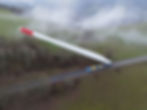Introduction
According to the 26th UN Climate Change Conference of the Parties (COP26) held in Glasgow in 2021, the countries are aiming to secure a global net-zero by mid-century. As mechanical engineers in 2022, it is our responsibility to contribute to society for a better future. Because if we do not work towards it, there might be no future to look at.
There are many ways to achieve global net-zero, but today we will focus on wind turbines. Wind turbines and farms are rapidly increasing renewable energy sources, and are being installed all over the world. There are many ways a mechanical engineer can contribute to designing, manufacturing, and installing wind turbines. Following is the cycle to install a wind turbine which is relevant to every mechanical engineer. But one has to also keep in mind that this is a very multi-disciplinary industry.
If you are looking to move your career path to the wind turbine industry, these might be a few options for you.

Note: When a number of wind turbines are placed at a particular site, it is called a wind farm.
Site selection
The very first step is selecting a site for the wind farm. This is a very critical and complex process. It not only involves mechanical engineers but also involves political parties, lawyers, government policies, local residents, metrologists, etc. Initially, the potential sites for the wind farm are identified. There are numerous considerations while selecting a site, a few are stated below:
-
Wind speed: The very first and most important point while selecting a site for a wind turbine is the wind speed.
-
Surrounding locality: There should not be any residential area, touristic spot, or a reserved area within some radius according to the local government policies.
After selecting a site, the wind speed is measured and studied with a met mast. The data from two years is studied and the approximate power generation is calculated. During this process, the placement/layout of the wind turbines on the site is critical. Hence, the layout of the wind farm is optimized such that the power generation is highest and the losses are reduced. In order to achieve this, aerodynamicists and metrologists play a crucial role. Later, the chosen wind turbine company designs the wind turbines.
Designing
There are many ways a mechanical engineer can contribute to the design of a wind turbine, such as aerodynamics, materials, structural dynamics, etc.
-
Aerodynamics: Selecting the optimum airfoil for the site and designing the blade is an important design process.
-
Materials: The most common type of material used for manufacturing a wind turbine is carbon fiber composite. Nowadays, there is a lot of ongoing research on the materials used in wind turbines. The life of a wind turbine is generally 25 years. Once it completes that, the turbines are taken down. In order to avoid wind turbine graveyards/landfills, it is important to manufacture recyclable/degradable blades.
-
Structural dynamics: The turbine size is increasing day by day and is being placed offshore (in the sea). In this case, the structural dynamics become very complex as there is a lot of Degree of freedom in the system. The frequency of the different components should be taken care of to avoid resonance. There are a few cases where the turbine has been broken down, which is not safe. Hence, the structural integrity of an offshore wind turbine becomes even more important.
Manufacturing
Manufacturing a huge structure has its own difficulties. A lot of planning, manpower, and space is required for the manufacturing of modern wind turbines. Optimizing the cost and managing the supply chain becomes crucial.
Transportation and installation

One of the most important tasks after the manufacturing process is planning and engineering the transportation. Transporting these huge structures to mountains or/and offshore must be calculated correctly. Otherwise, in case of structure failures, the company suffers a huge loss. The later installation comes with its own challenges. Lately, there have been very innovative ideas for offshore installation.

Commissioning
The engineer’s work does not end at just the installation. It is equally important to monitor the wind turbine whenever it is running. They might keep a check on the climate for very high wind speeds. Planning regular maintenance, and keeping an eye on the speed, temperature of the generator, etc has to be done.
The wind turbine also needs to be taken down once they complete its life cycle. The wind farm may or may not be repowered.
Does it really depend on the wind?
You might be wondering why is it called a wind turbine. Is wind really that important? The answer is yes! Wind speed is very important for a wind turbine. As you can see from the formula for power generated below, the power generated is directly proportional to the cube of the wind speed.
Summary:

-
Wind energy is a rapidly growing industry as a renewable energy producer.
-
Mechanical engineers are very much needed in this industry, as designers, aerodynamicists, structural dynamicists, manufacturers, transport, installation, maintenance planners, etc.
-
A typical wind turbine installation cycle runs from site selection, designing, manufacturing, transport, installation, and lastly commissioning.
The complete power formula and where it comes from will be given in the next article. Stay tuned. How do you like this article? Let us know in the comments. Is there anything else you want to know about wind turbines? Feel free to comment below.
